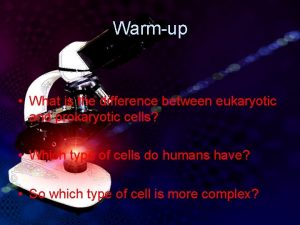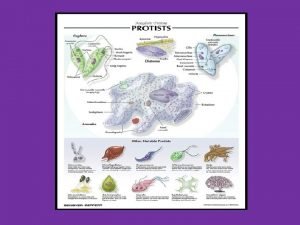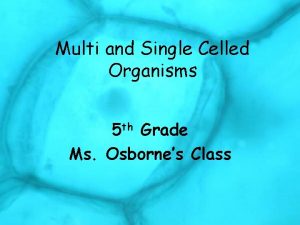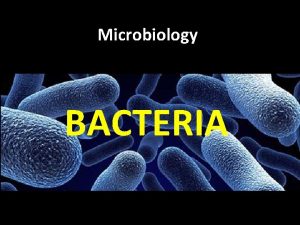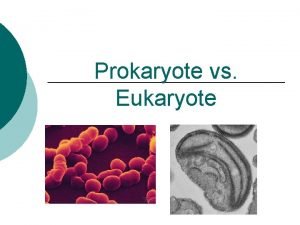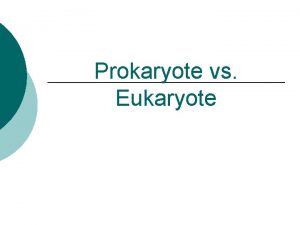Cell types Prokaryote Eukaryote Single celled organisms Organisms











- Slides: 11

Cell types Prokaryote Eukaryote Single celled organisms Organisms with one or more cells

The Prokaryotic Cell



Terms • Cell wall - rigid outer layer of the cell – located outside the plasma membrane and within the capsule – provides structure • DNA - The genetic material; it is located within the cytoplasm.

• Cytoplasm - The jellylike material inside the plasma membrane – Contains the genetic material and ribosomes. • Cell (Plasma) membrane - A permeable membrane located within the cell wall. – Responsible for energy generation and transport of chemicals.

Ribosome - Small organelles Location of the RNA – Is where protein synthesis occurs. – Located within the cytoplasm. Plasmid - Small piece of cytoplasmic DNA – Can be transferred from one organism to another.

Capsule - A layer on the outside of the cell wall. Most but not all bacteria have a capsule. Flagellum - A long whip-like structure used for locomotion (movement). Some bacteria have more than one flagellum.

• pili - (singular is pilus) Hair-like projections that allow bacterial cells to stick to surfaces and transfer DNA to one another.

Other things you should know about Prokaryotes There are two kingdoms of Prokaryotes – 1. Bacteria – 2. Archaea • • Prokaryotes have no Nucleus Prokaryotes are limited on how big they can get by the surface to volume ratio.

Surface to Volume Ratio – The surface to volume ratio decreases as cell size increases – The bigger a cell gets • the more food it needs and the more waste it produces • the less food it can get in and the less waste it can get out.
 Unicellular and multicellular
Unicellular and multicellular Eukaryote
Eukaryote Is protist a prokaryote or eukaryote
Is protist a prokaryote or eukaryote Eukaryotic vs prokaryotic cells
Eukaryotic vs prokaryotic cells What time did you arrive in class today
What time did you arrive in class today Unicellular organisms means
Unicellular organisms means Chapter 15:3 washing hands
Chapter 15:3 washing hands Animal-like protist
Animal-like protist Single cell protist
Single cell protist Unicellular and multicellular organisms 5th grade
Unicellular and multicellular organisms 5th grade Alga uniseluler
Alga uniseluler What are three benefits of being multicellular
What are three benefits of being multicellular

